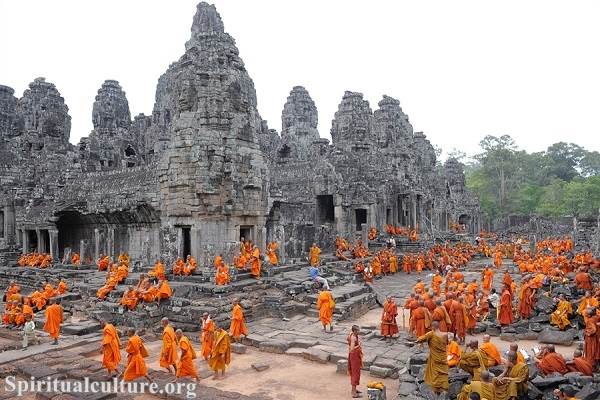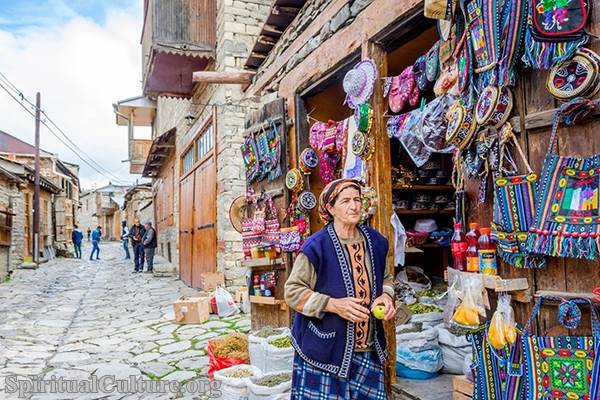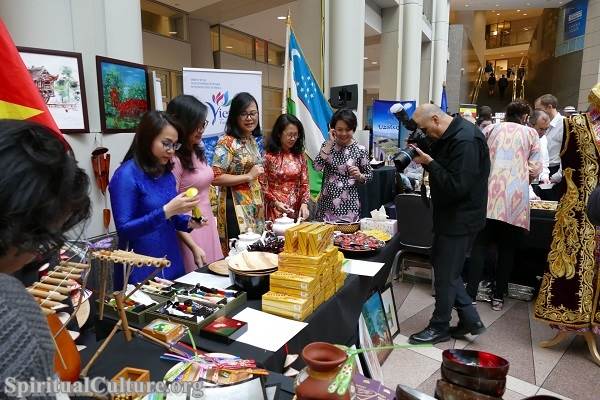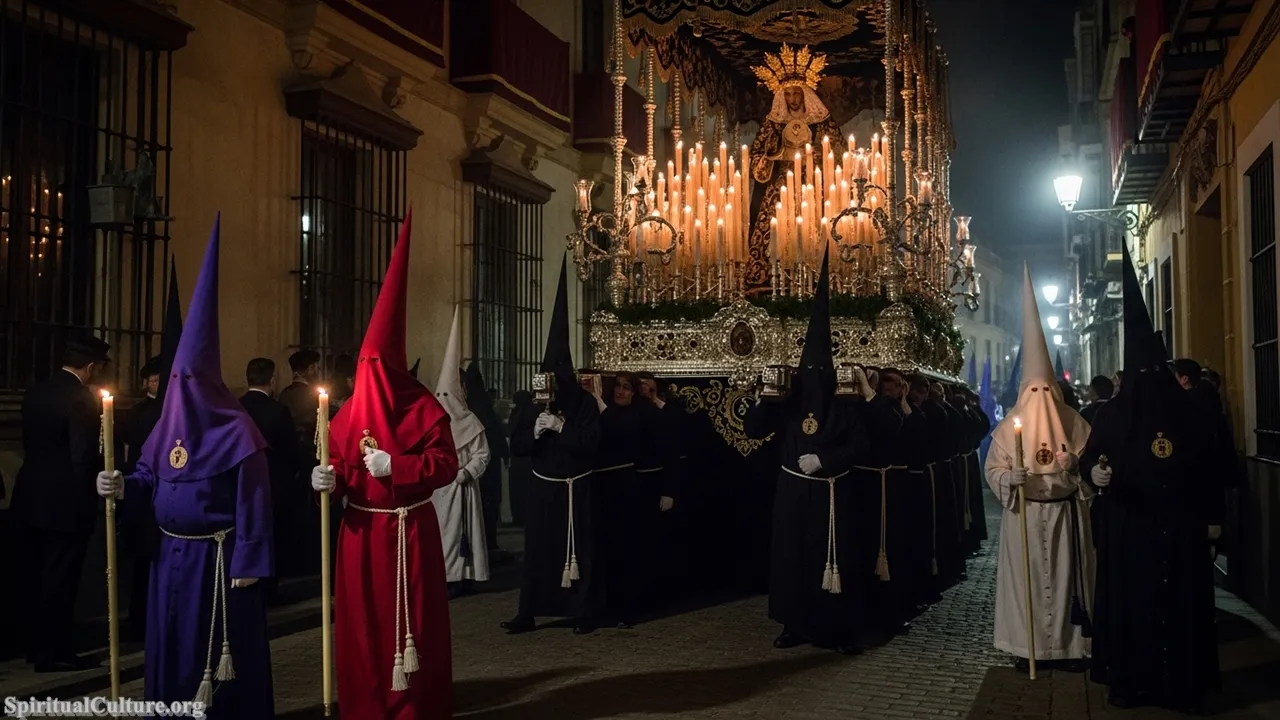Asia is the birthplace of the world’s major religions and features a cultural tapestry woven over millennia. Its festivals are not merely public holidays but profound spiritual and social anchor points—a living repository of heritage. These celebrations function as massive annual ceremonies of renewal, remembrance, devotion, and community cohesion, often dictated by ancient lunar and solar calendars. Understanding these events is essential to grasping the continent’s soul.
At Spiritual Culture, we delve beyond the spectacle to analyze the deep cultural, historical, and spiritual significance that qualifies an event as truly world-famous and impactful. This ranking considers scope of adherence, spiritual intensity, historical lineage, and global recognition, including intangible cultural heritage status where applicable. From silent days of meditation to exuberant explosions of color, Asia’s festivals speak a universal language of faith and tradition.
This guide presents the ten most famous cultural festivals, each verified against current data and contextualized for their enduring spiritual value as of the Current Time of Writing, November 2025. They represent the collective reverence, joy, and deep-seated traditions that continue to shape the Asian identity.
Table of the Top 10 Most Famous Asian Cultural Festivals by Spiritual and Global Impact
| # | Festival Name | Primary Country/Culture | Spiritual Focus | Approximate Date (2025) |
|---|---|---|---|---|
| 1 | Lunar New Year (Spring Festival / Tết) | China, Vietnam, Korea, etc. | Ancestral Reverence, Family Reunion, Renewal, Fortune | Jan 29 (China/Feb 17, 2026 for next major cycle) |
| 2 | Diwali (Deepavali) | India (Global Hindu/Jain/Sikh) | Victory of Light over Darkness, Good over Evil, Lakshmi Worship | Oct 20, 2025 |
| 3 | Holi | India, Nepal | Triumph of Good, Welcoming Spring, Love (Radha-Krishna) | Mar 14, 2025 |
| 4 | Vesak (Buddha Day) | Sri Lanka, Thailand, Southeast Asia | Birth, Enlightenment, and Nirvana of the Buddha | Varies (Typically May Full Moon) |
| 5 | Songkran (Thai New Year) | Thailand (Similar events in Laos/Myanmar) | Spiritual Cleansing, Purification, Paying Respect to Elders | Apr 13–15, 2025 |
| 6 | Loi Krathong / Yi Peng | Thailand | Honoring the Water Goddess, Letting Go of Negativity, Light Offerings | Nov 5, 2025 |
| 7 | Thaipusam | Malaysia, Singapore, India (Tamil Communities) | Penance, Devotion to Lord Murugan, Triumph of Virtue | Feb 11, 2025 |
| 8 | Nyepi (Day of Silence) | Bali, Indonesia | Self-Reflection, Purification, Communal Silence/Invisibility to Spirits | Mar 29, 2025 |
| 9 | Gion Matsuri | Kyoto, Japan | Averting Plagues/Purification, Worshipping Shinto Deities | July (The whole month) |
| 10 | Esala Perahera | Kandy, Sri Lanka | Honoring the Sacred Tooth Relic of the Buddha, Invoking Blessings | July/August (Varies) |
Top 10. Esala Perahera (Kandy, Sri Lanka)
The Esala Perahera, or the Festival of the Tooth, is an awe-inspiring spectacle that transforms the city of Kandy, Sri Lanka, into a luminous, ancient court. Taking place over several nights in July/August as of the Current Time of Writing, this annual procession showcases a vibrant fusion of music, dance, and ornately decorated elephants, all paying homage to the Sacred Tooth Relic of the Buddha. It is a profound demonstration of devotion by the Sinhalese Buddhist community, drawing pilgrims and observers from across the world to witness one of the most magnificent religious parades in Asia.
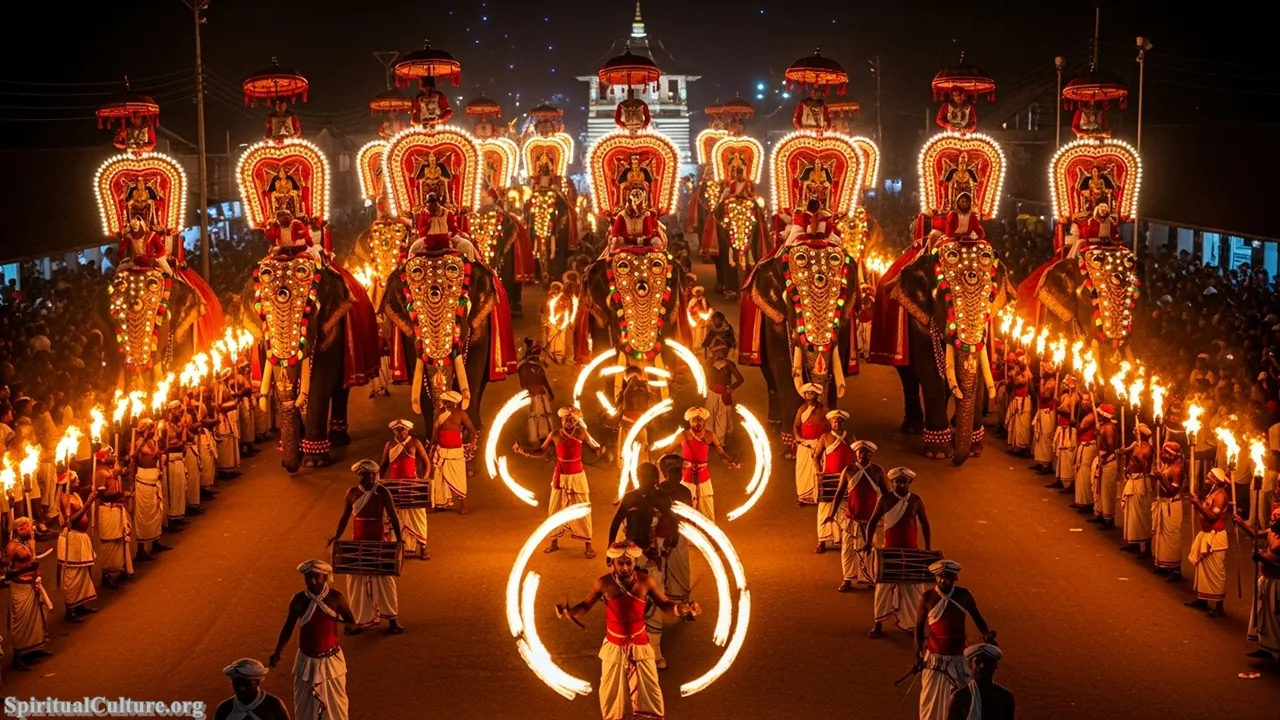
This festival is ranked for its immense spiritual prestige, serving as the cultural pinnacle of Sinhalese Buddhism. The core purpose is not public entertainment but a ritual to invoke blessings from the deities for rain and a bountiful harvest, centering on the relic’s symbolic protection of the island nation. The Perahera acts as a living temple, where the entire community participates in a ritual of collective merit-making, reinforcing deep-seated religious and cultural identity.
The Perahera serves as a powerful reminder of how sacred heritage—a physical relic—can become the spiritual axis for an entire nation’s culture, inspiring artistry and communal devotion. Its meticulous preservation of ancient dance forms, traditional costuming, and ceremonial rites offers a moral lesson in the continuous upkeep of tradition, illustrating that true cultural wealth lies in continuity, not just monuments.
Cultural/Spiritual Highlights:
- The Perahera procession features the casket carrying the Sacred Tooth Relic, protected by a Maligawa elephant.
- A multi-day event fusing the Buddhist veneration of the Tooth Relic with Hindu-influenced local deity worship.
- Incorporates traditional Kandyan dancers and drummers, meticulously preserving ancient Sri Lankan arts.
Top 9. Gion Matsuri (Kyoto, Japan)
Held throughout the month of July, Kyoto’s Gion Matsuri is one of Japan’s most famous and historically significant festivals, having roots stretching back over a millennium. As of the Current Time of Writing, the event is primarily known for its stunning procession of gigantic, elaborately decorated floats, the Yamaboko, which are themselves considered moving museums of art and textile history. The entire celebration transforms the ancient capital into a showcase of traditional Japanese aesthetics, drawing millions of domestic and international visitors.
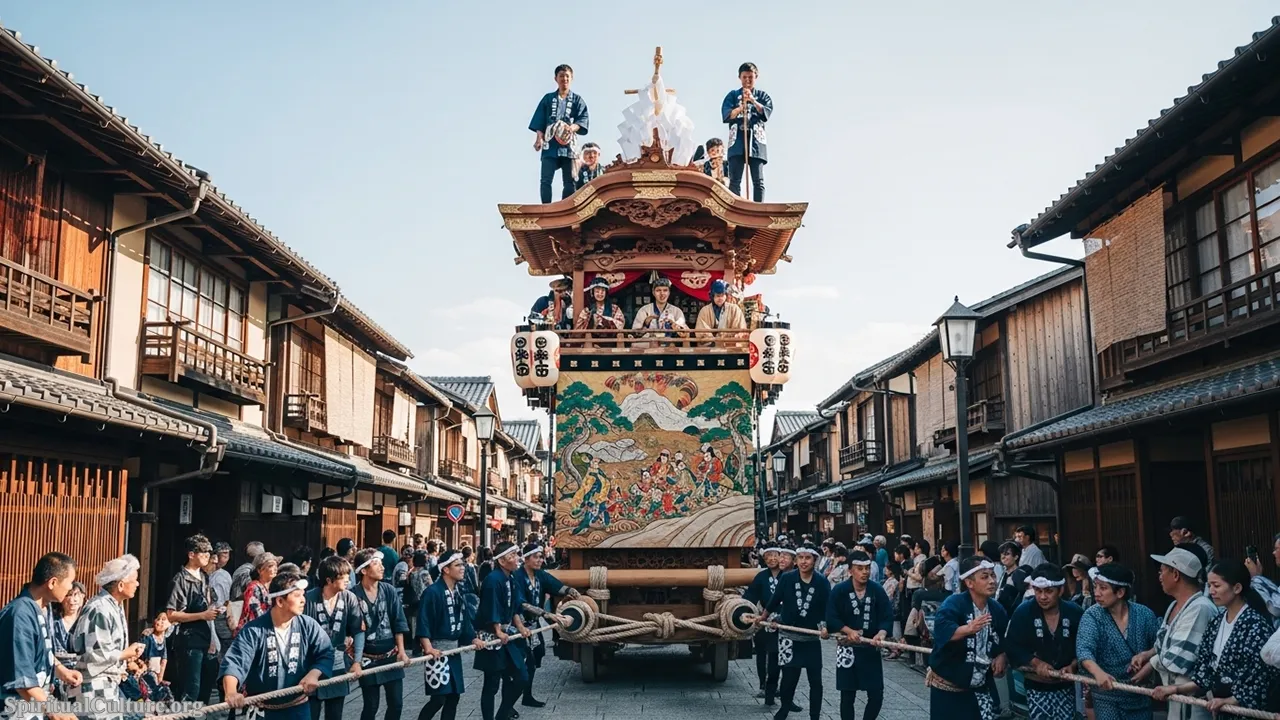
The original spiritual purpose for this ranking was to appease the deities thought to cause plague and natural disasters. This act of purification remains central, with the magnificent floats serving as a ritual cleansing mechanism for the city. The act of pulling the floats and the days of preparation (Yoiyama) are steeped in Shinto tradition and community solidarity, where locals open their homes to display priceless family treasures—demonstrating a deep spiritual connection to ancestors and neighborhood history.
The festival’s triumph over numerous historical interruptions—including wars and natural disasters—highlights the powerful preservation value of community commitment. The Gion Matsuri teaches that maintaining a cultural tradition is a cyclical, collective responsibility passed down through generations. It emphasizes the Japanese reverence for purity, beauty, and the profound connection between the spiritual world and the seasonal human experience.
Cultural/Spiritual Highlights:
- Its origins trace back to a purification ritual in 869 AD to pray for the end of an epidemic.
- The floats (Yamaboko) are adorned with tapestries from Europe, Persia, and China, illustrating Kyoto’s historic role as a cultural hub.
- The festival features on UNESCO’s list of Intangible Cultural Heritage as part of the “Yama, Hoko, Yatai, float festivals in Japan.”
Top 8. Nyepi (Day of Silence) (Bali, Indonesia)
Nyepi, the Balinese Day of Silence, is the complete antithesis of the typical loud Asian festival, making it globally famous for its radical form of observance. As of the Current Time of Writing, on the day that marks the Hindu New Year on the Balinese Saka calendar (March 29, 2025), the entire island of Bali effectively shuts down for 24 hours. The rules are strictly enforced: no lighting fires (or using electricity/light), no working, no entertainment, and no travel, fostering a profound sense of communal stillness.
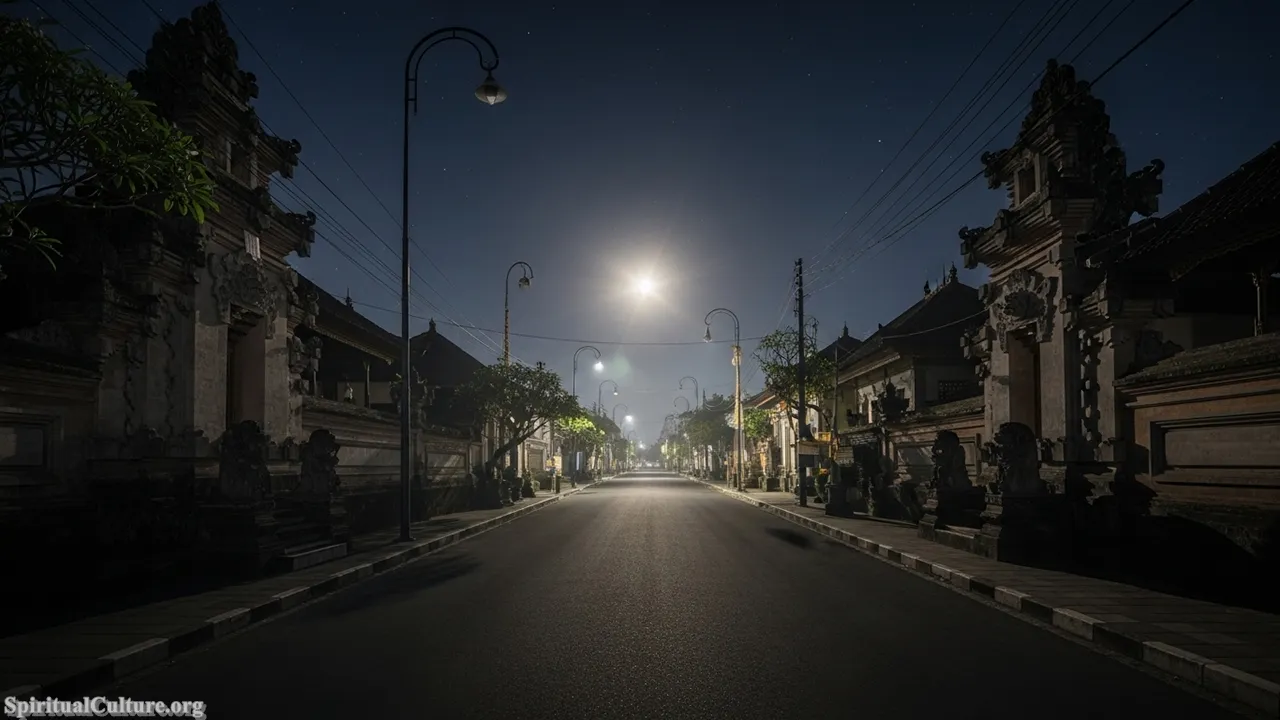
The spiritual impact of Nyepi is immense, rooted in the Hindu belief that absolute silence and inactivity trick evil spirits into believing the island is uninhabited, thereby cleansing it for the new year. This ranking is based on its radical expression of collective spiritual discipline, demanding total self-control and meditation (Catur Brata Penyepian). It is a mass act of purification, forcing every person to engage in self-reflection and connection with the divine (Hyang Widhi Wasa) without external distractions.
The Balinese practice of Nyepi offers a vital moral lesson for the modern world: the power of voluntary, collective renunciation. In an age of constant connectivity, the Day of Silence highlights the spiritual necessity of unplugging to reconnect with one’s inner self. The preceding night, with its boisterous Ogoh-Ogoh demon effigy parades, sets up the powerful contrast, symbolizing the casting out of inner and outer demons before embracing quietude.
Cultural/Spiritual Highlights:
- The day after Nyepi is the Ngembak Geni, a day for mutual forgiveness and reflection.
- The core observance involves Amati Geni (no fire/light), Amati Karya (no work), Amati Lelungan (no travel), and Amati Lelanguan (no pleasure/noise).
- Preceded by the Ogoh-Ogoh procession, where demon effigies representing negative forces are paraded and burned.
Top 7. Thaipusam (Malaysia, Singapore, India)
Thaipusam, celebrated predominantly by the Tamil Hindu communities in Malaysia (most famously at Batu Caves) and Singapore, is one of the world’s most striking displays of public religious devotion. Celebrated during the full moon in the Tamil month of Thai (February 11, 2025), the festival honors Lord Murugan, the Hindu God of War and Virtue, and commemorates the day he received a divine spear (Vel) from his mother, Parvati, to defeat the demon Surapadman. Its reputation for extreme acts of penance makes it globally famous as of the Current Time of Writing.
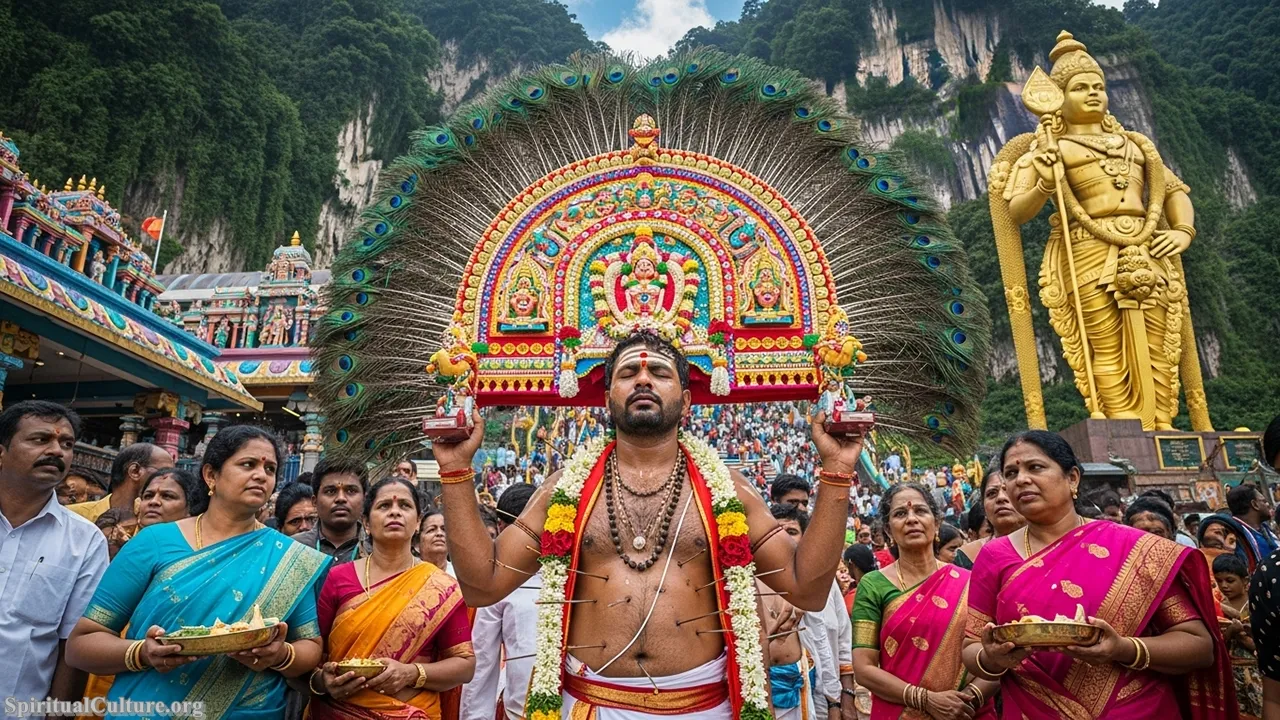
The ranking is based on the spiritual intensity of the devotees, who undertake severe acts of penance, most notably the carrying of the Kavadi—elaborate, often heavy, decorated burdens—and body piercings. These acts are not self-mutilation but deeply ritualized vows of thanksgiving, expiation, or prayer for a specific boon, undertaken only after weeks of mental and physical purification. The sheer visual and emotional power of devotees entering a trance-like state to transcend pain is a profound testament to the power of faith and the human spirit’s capacity for devotion.
Thaipusam serves as a moral lesson in sacrifice and the ultimate power of spiritual focus over physical sensation. The dedication required to prepare for and execute the Kavadi pilgrimage reflects a deep-rooted commitment to overcoming one’s ego and personal burdens. It teaches that through focused devotion and self-discipline, one can transform pain into a vehicle for divine grace, fostering a sense of community strength among adherents.
Cultural/Spiritual Highlights:
- Ritualistic practice involves piercing the skin, tongue, and cheeks with skewers and hooks, demonstrating divine protection.
- The Kavadi (burden) carried by pilgrims symbolizes their commitment and represents the hill of Mount Kailash.
- Devotees observe a strict, 48-day vegetarian diet and celibacy before participating in the main procession.
Top 6. Loi Krathong / Yi Peng (Thailand)
Thailand’s Festival of Lights, Loi Krathong, and its northern counterpart, Yi Peng, are arguably the most visually poetic and globally celebrated festivals in Southeast Asia. Occurring on the night of the full moon of the 12th lunar month (November 5, 2025), people launch beautifully crafted floating baskets (Krathongs) onto the rivers and release thousands of sky lanterns (Khom Loi) into the night sky, particularly in Chiang Mai. This dual celebration of light upon water and air has become a global cultural icon as of the Current Time of Writing.

Spiritually, Loi Krathong is an act of deep reverence, rooted in a mixture of Buddhist and Brahmin traditions. Launching the Krathong is considered an act of “letting go” of past grievances, negativity, and bad luck. It is a ritual of purification and a direct act of homage to the Goddess of Water, Phra Mae Khongkha. Yi Peng’s lanterns carry written prayers and wishes to the heavens, symbolizing a temporary release from earthly concerns and a path toward enlightenment. The combined effect is a mass, moving meditation on impermanence and aspiration.
This festival celebrates the profound human desire for renewal and a fresh start. By physically sending off one’s burdens on the water or releasing a prayer into the vast sky, the participants engage in a communal cleansing ritual that highlights the interconnectedness of humanity and nature. It imparts a profound moral lesson that releasing what burdens us is essential for our spiritual and emotional progress.
Cultural/Spiritual Highlights:
- Krathongs contain a candle, incense, and often a lock of hair or nail clippings to symbolize letting go of the self.
- The act of the lantern taking flight is a symbolic path to Nibbana (Nirvana) in the Lanna Buddhist tradition.
- The two festivals are celebrated concurrently, creating a stunning visual dichotomy of lights ascending to the sky and drifting down the rivers.
Top 5. Songkran (Thai New Year) (Thailand)
Songkran, the traditional Thai New Year celebration, is famous globally as the world’s largest water fight, yet its origins are profoundly sacred. Taking place from April 13 to 15, 2025, the festival marks the sun’s passage into the zodiac sign of Aries. As of the Current Time of Writing, while it draws massive crowds for its exuberant water battles, the true heart of Songkran remains a deep spiritual cleansing ritual observed across Thailand, Laos (Pi Mai Lao), and Myanmar (Thingyan).
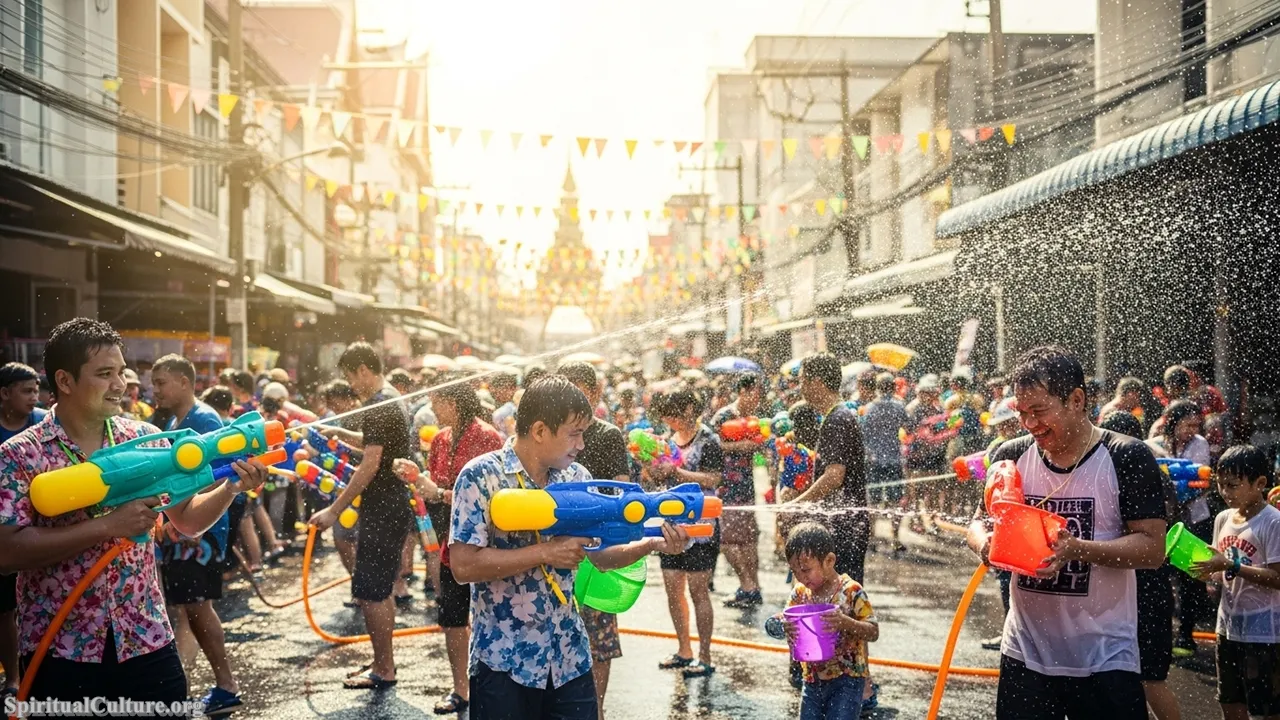
Its high ranking is a result of its universal spiritual concept: purification and renewal. The tradition of gently pouring water over Buddha statues and the hands of elders (Rod Nam Dam Hua) is an act of reverence, seeking blessings and washing away the previous year’s sins and misfortunes. The subsequent, larger-scale water splashing is a natural extension of this, symbolizing the washing away of bad luck for all and the anticipation of rain for a good harvest. It is a powerful cultural expression of merit-making and communal joy.
Songkran offers a unique reflection on the dual nature of spiritual observance—balancing deep respect for the sacred with exuberant, life-affirming joy. The festival teaches that spiritual cleansing is not solely a solemn affair but can be a collective, joyous, and playful experience that strengthens social bonds. It reminds us of the importance of honoring one’s ancestors and elders while embracing the spirit of the new season.
Cultural/Spiritual Highlights:
- The water, traditionally scented with herbs, is sacred, representing purification and good wishes for the New Year.
- Participants visit temples to offer food to monks, pray, and clean sacred images.
- The traditional water-pouring ceremony is recognized by UNESCO as Intangible Cultural Heritage.
Top 4. Vesak (Buddha Day) (Buddhist Asia)
Vesak, known globally as Buddha Day, is the most sacred day in the Buddhist calendar, commemorating the birth, enlightenment (Nibbana), and death of Siddhartha Gautama. Observed across nearly all of Buddhist Asia—from Sri Lanka to Vietnam, and famously at Borobudur Temple in Indonesia—it is a day of immense religious solemnity and charity. As of the Current Time of Writing, millions of adherents partake in silent prayer, acts of service, and elaborate light displays that illuminate temples and communities worldwide.
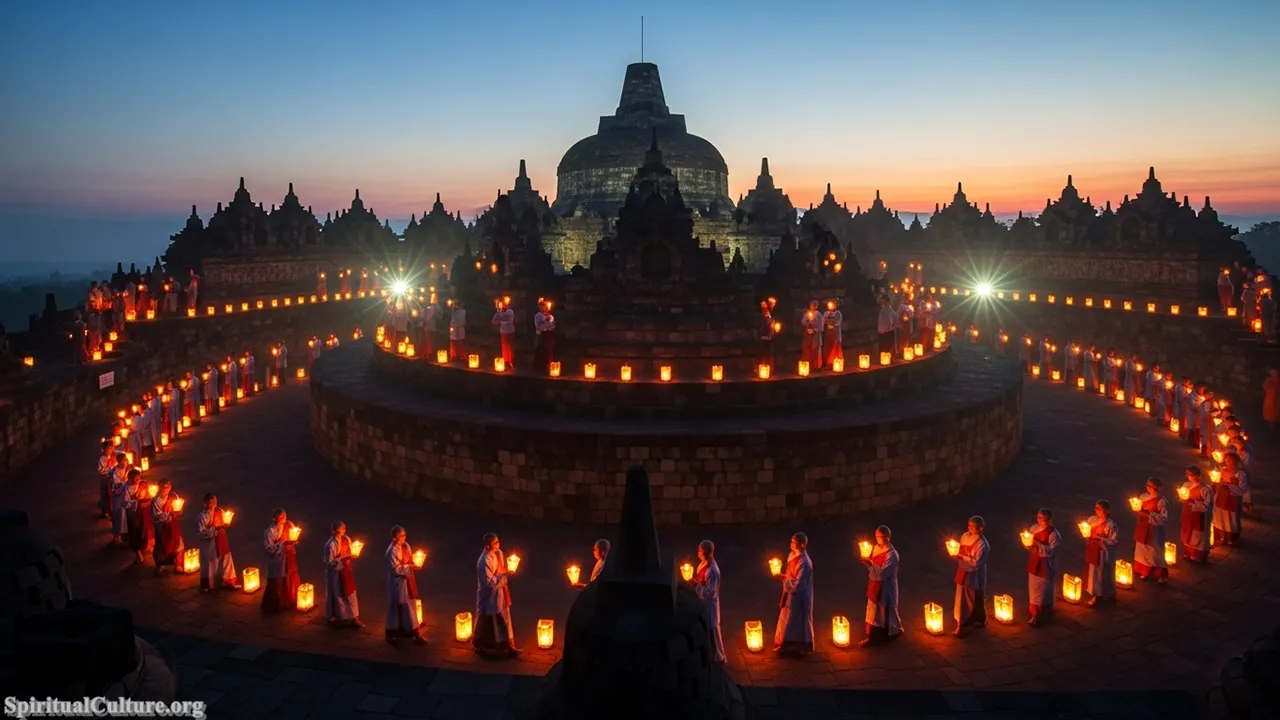
The spiritual ranking is paramount, as Vesak provides the singular spiritual framework for nearly half a billion Buddhists. It is a day dedicated entirely to embodying the Buddha’s teachings: practicing Dana (giving), Sila (morality), and Bhavana (meditation). The festival’s global impact lies in its unifying power across different Buddhist schools and nations, all focused on the core spiritual path of compassion, non-violence, and wisdom. This concerted global act of spiritual focus elevates its significance above regional festivals.
Vesak’s enduring moral lesson is the importance of intellectual and spiritual transformation. By recalling the three key moments of the Buddha’s life, the festival prompts followers to renew their commitment to ethical conduct and the journey toward enlightenment. The mass release of caged animals, a common ritual, embodies the Buddhist principle of Ahimsa (non-harm), reminding humanity that compassion should extend to all living beings.
Cultural/Spiritual Highlights:
- Commemorates the ‘Triple Blessed Day’ of the Buddha: Birth, Enlightenment, and Parinirvana (passing).
- Observed by massive ceremonies, including the candle-lit circumambulation (Pradakshina) at sites like Borobudur.
- A global holiday officially recognized by the United Nations since 1999 for its spiritual contribution.
Top 3. Holi (Festival of Colors) (India, Nepal)
Holi, the Hindu Festival of Colors, is arguably the world’s most visually recognizable and famous celebration, known for its exuberant public display of throwing powdered colors (gulal). Occurring over two days in March (March 14, 2025), the festival’s fame extends far beyond India and Nepal, influencing cultural events globally. As of the Current Time of Writing, it is a massive socio-religious event that temporarily dissolves social hierarchies and economic disparities into a joyful rainbow of unified humanity.

Holi’s spiritual depth provides its high ranking. The first night’s ritual, Holika Dahan, celebrates the symbolic victory of the devoted Prahlada over the demon Holika, embodying the triumph of good over evil. The following day of colors celebrates eternal and divine love, particularly the stories of Radha and Krishna. The act of applying and throwing color is a ritualistic breaking down of social barriers, encouraging a spiritual unity where everyone, regardless of caste or status, is covered in the same sacred dust, symbolizing the essential oneness of all beings.
The moral lesson of Holi is forgiveness and reconciliation, a spiritual reboot for society. By allowing one day for structured chaos and playful disregard for formality, communities are invited to let go of their grudges, laugh together, and reinforce their social bonds. It teaches that the spiritual path can be one of vibrant, collective joy, where the pursuit of goodness is celebrated with infectious, communal energy.
Cultural/Spiritual Highlights:
- The first night features Holika Dahan, the burning of bonfires to symbolize the victory of good (Prahlada) over evil (Holika).
- The festival is strongly associated with the divine love of Lord Krishna and his playful antics.
- The use of colors is also connected to the arrival of spring and a celebration of fertility and bountiful harvest.
Top 2. Diwali (Deepavali) (India, Global Hindu/Sikh/Jain)
Diwali, the five-day Festival of Lights, is the most important and widely observed festival in the Hindu, Sikh, and Jain calendars, celebrated by over a billion people worldwide. In 2025, the main day of Lakshmi Puja falls on October 20. The spectacle of millions of clay lamps (diyas), candles, and lights illuminating homes, temples, and streets across Asia and the globe makes it an unparalleled expression of spiritual optimism. As of the Current Time of Writing, the festival is a global beacon of hope and prosperity.
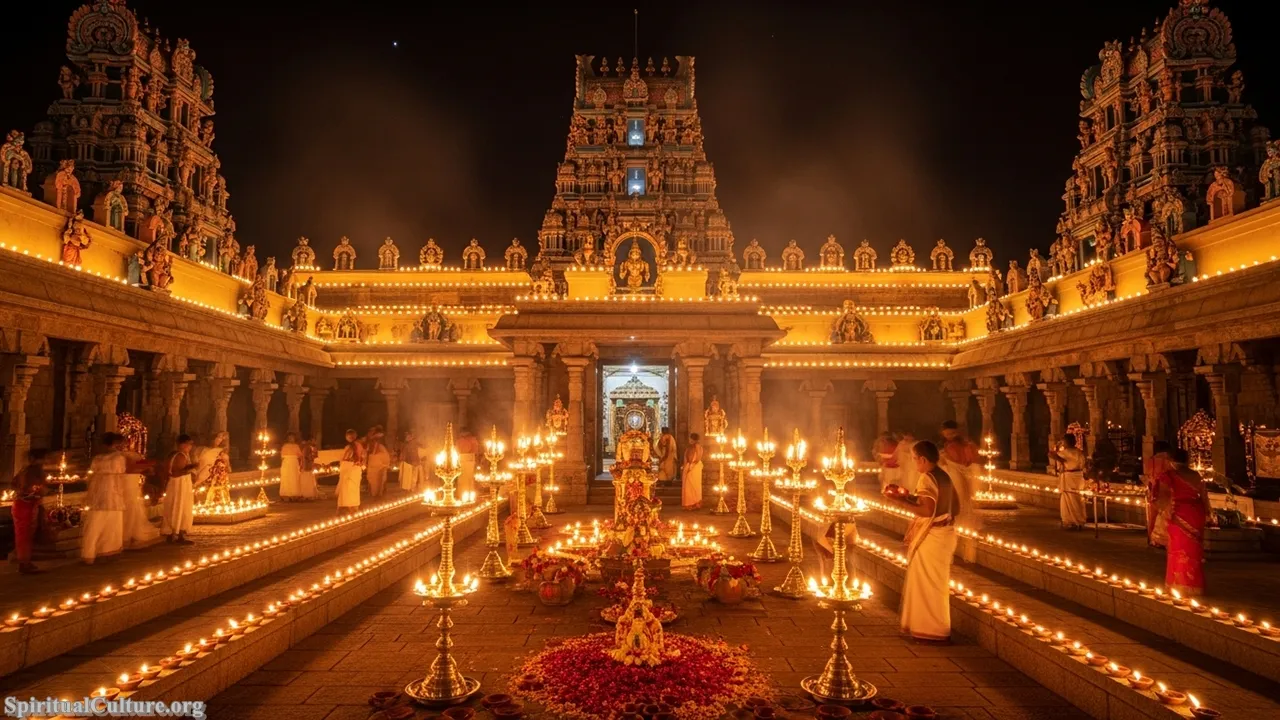
This ranking is secured by its sheer scale and its profound, multi-layered spiritual meaning: the victory of knowledge over ignorance, light over darkness, and good over evil. The main observance focuses on welcoming Lakshmi, the Goddess of Prosperity, into the home through meticulous cleaning and the lighting of diyas, which symbolizes the inner light of spiritual realization. For Jains, it commemorates Lord Mahavira’s attainment of Nirvana, and for Sikhs, the day of freedom (Bandi Chhor Divas). This confluence of major traditions underscores its deep regional and global spiritual importance.
Diwali’s celebration is a powerful practice of inner cleansing and external generosity. It teaches the enduring moral lesson that true prosperity is not just material but also spiritual, found in the shared light of community and the pursuit of ethical living. The ritual of lighting a single diya to dispel deep darkness encourages the profound reflection that a small act of righteousness or wisdom can illuminate an entire life.
Cultural/Spiritual Highlights:
- Symbolizes Lord Rama’s return to Ayodhya after 14 years of exile and victory over Ravana.
- The five-day festival includes Dhanteras (wealth worship) and Bhai Dooj (celebrating sibling bonds).
- The lighting of the diya is a spiritual metaphor for the human quest for divine light and knowledge.
Top 1. Lunar New Year (Spring Festival / Tết) (East and Southeast Asia)
The Lunar New Year, spanning China’s Spring Festival, Vietnam’s Tết, and Korea’s Seollal, stands as the most famous cultural festival in Asia due to its colossal demographic scale, historical depth, and universal thematic significance. With billions of people participating in the world’s largest annual human migration (Chunyun) to reunite with family, the festival is the unparalleled cultural and social anchor for all of East and Southeast Asia. Its central date for 2025 falls on January 29, marking the transition to the Year of the Snake in many cultures. As of the Current Time of Writing, the festival’s traditions dictate everything from commerce to travel across an entire continent.
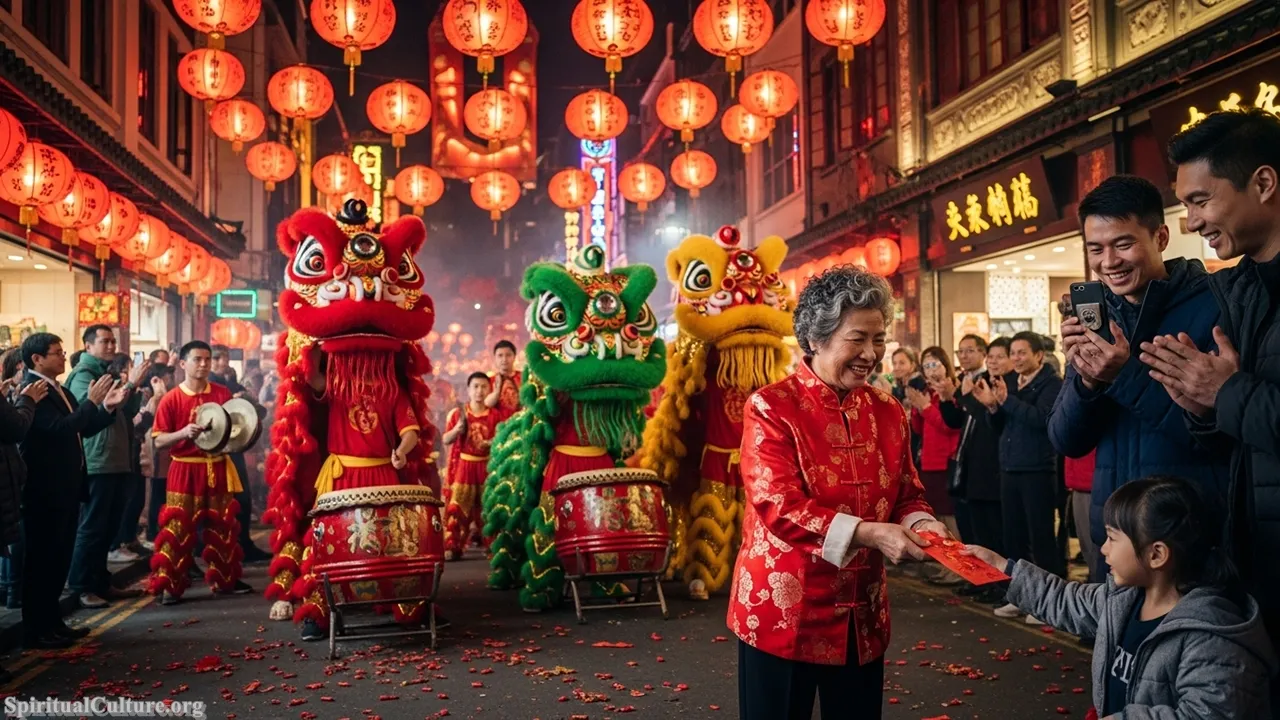
The number one ranking is justified by the festival’s spiritual focus on ancestral reverence and the powerful idea of communal and personal renewal. Traditions revolve around paying respect to deceased family members, making offerings to household deities, and ritually cleansing the home to sweep away bad luck. It is a multi-day ceremony dedicated to resetting the social, economic, and spiritual clock. This deep-seated emphasis on family cohesion, continuity, and honor for those who came before is arguably the most fundamental and unifying spiritual value across the vast cultural sphere of the region.
The Lunar New Year is the ultimate lesson in cultural preservation through family. It teaches that the continuity of tradition rests on the generational effort to return home, share symbolic foods, and pass down rituals to the young. It emphasizes that the transition into a new cycle must be handled with utmost respect for the past, ensuring that one’s personal journey is anchored in the collective heritage of the clan. This powerful, unifying act of renewal makes it the most famous and culturally influential festival in all of Asia.
Cultural/Spiritual Highlights:
- Encompasses the world’s largest annual human migration as people travel for family reunions.
- Central spiritual activities include offering respects to the Kitchen God and deceased ancestors.
- Symbolic acts include giving red envelopes (hóngbāo) for fortune and setting off fireworks to ward off evil spirits.
- Vietnam’s Tết includes honoring the Kitchen Gods (Ông Táo), who report on the family to the Jade Emperor.
Conclusion
The Top 10 Cultural Festivals of Asia are more than just items on a calendar; they are the rhythmic beat of the continent’s spiritual heart, demonstrating a profound continuity of heritage that defines modern-day Asia. From the inner silence of Bali’s Nyepi to the collective, luminous joy of India’s Diwali, each festival encapsulates millennia of wisdom, devotion, and community spirit. They remind us, at Spiritual Culture, that culture is not static; it is a dynamic, collective act of faith, beautifully renewed year after year.
These great annual ceremonies—whether honoring Buddha, Murugan, an ancestor, or the arrival of spring—stand as powerful testimonies to the human quest for meaning, unity, and the triumph of light over darkness. By participating or simply observing, we gain invaluable insight into the enduring spiritual values that bind diverse Asian cultures together, celebrating life, death, and the perpetual cycle of renewal.
